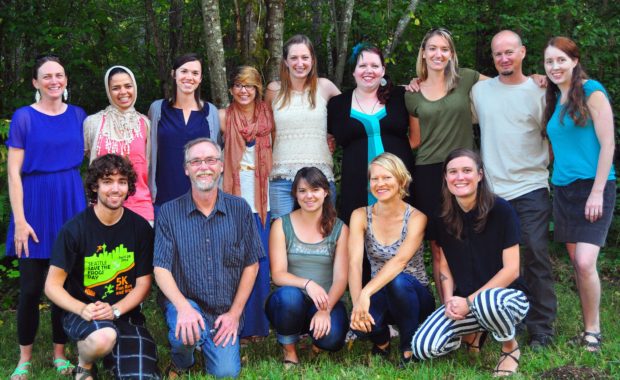By Paula Andrew, Roots of Success Liaison, Training Coordinator, and “Chicken Lady” at Washington Corrections Center for Women.
“There is nothing more beautiful than someone who goes out of their way to make life beautiful for others.” ~ Mandy Hale
When I first came to work at the Washington Corrections Center for Women nearly 5 years ago, I came from a background of work in men’s prisons, large and small. Looking back, nothing could have prepared me for the impact I would feel working with female offenders.
My heart went out to the women I encountered on a daily basis. The more I got out of my office and observed, the hungrier I became to try and bring some kind of normalcy to the women that were longing to make the best of their shattered world.
I was delighted when I found out I would be working with an organization called the Sustainability in Prisons Project – bonus for me! A group of caring Evergreen students and staff who want what I want for these women: a little dose of culture from the outside they can embrace and expand their world with…their little tiny corner of their now restricted world needs expanding.

Brittany Gallagher and guest lecturer Anna Thurston walk together to the prison classroom. Photo by Shauna Bittle.
Enter Brittany Gallagher, Lecture Coordinator for the Sustainability in Prisons Project. Her job was to plan, organize, and recruit speakers for our monthly Sustainability lecture series. My job was to work with her to put things together on the prison end to make it happen. What a treat it was to work with her! She immediately had the respect of the women in the audience for the lectures. You could tell the women were excited when she talked about things they could do in their own community upon release, and it gave them hope for a sustainable future. Brittany’s quiet smile spread warmth throughout the classroom that was contagious! When Brittany graduated from Evergreen College, like all good graduate students do, I felt like I had lost a good buddy. She was off to the world of exploring her universe, and I was sad to see her go, but excited for her at the same time.

Tiffany Webb talks with lecture series students following a presentation. Photo by Joslyn Rose Trivett.
. . . And then along came Tiffany Webb, pretty much the exact opposite of Brittany, with her wide grin, her dancing eyes, and her thirst for sharing her passion for all things sustainable with the world. Tiffany was quick to share her enthusiasm with the students and show them glimpses of life beyond the metal bars. Her stories were laced with leadership, compassion, and strength. Tiffany had a way of involving the students to the point there were actual tears among the lecture-goers when she left. It was a sad day when we had to say goodbye to Tiffany, but waiting in the wings was . . .

Liliana describes her definition of sustainability to lecture series students. Photo by Joslyn Rose Trivett.
. . . Liliana Caughman! Dear Liliana quickly became a reliable source of information to the women, one with good listening skills and a patient manner. She continues the Brittany/Tiffany legacy with passion and conviction, all the while spreading the word that these gals can make a difference in the world.
Brittany, Tiffany, Liliana are definitely “someone who goes out of their way to make life beautiful for others”!









 Graduation brings an end to student-staff employment. Each coordinator trains their successor, which is as much about introducing them to the culture and ways of thinking as it is about program policy and protocols. Each turnover is bittersweet. We have to say good-bye to someone we have relied on and invested in, and it is painful to see them go.! At the same time, we get to welcome someone new, and their fresh perspectives helps SPP to continually improve; we can’t get stale! Also, there is the satisfaction of seeing SPP alumni go on to new and valuable endeavors, and we take pride in supporting their ongoing careers and aspirations.
Graduation brings an end to student-staff employment. Each coordinator trains their successor, which is as much about introducing them to the culture and ways of thinking as it is about program policy and protocols. Each turnover is bittersweet. We have to say good-bye to someone we have relied on and invested in, and it is painful to see them go.! At the same time, we get to welcome someone new, and their fresh perspectives helps SPP to continually improve; we can’t get stale! Also, there is the satisfaction of seeing SPP alumni go on to new and valuable endeavors, and we take pride in supporting their ongoing careers and aspirations.















 by Kristina Faires, SPP Program Enhancement Coordinator
by Kristina Faires, SPP Program Enhancement Coordinator











